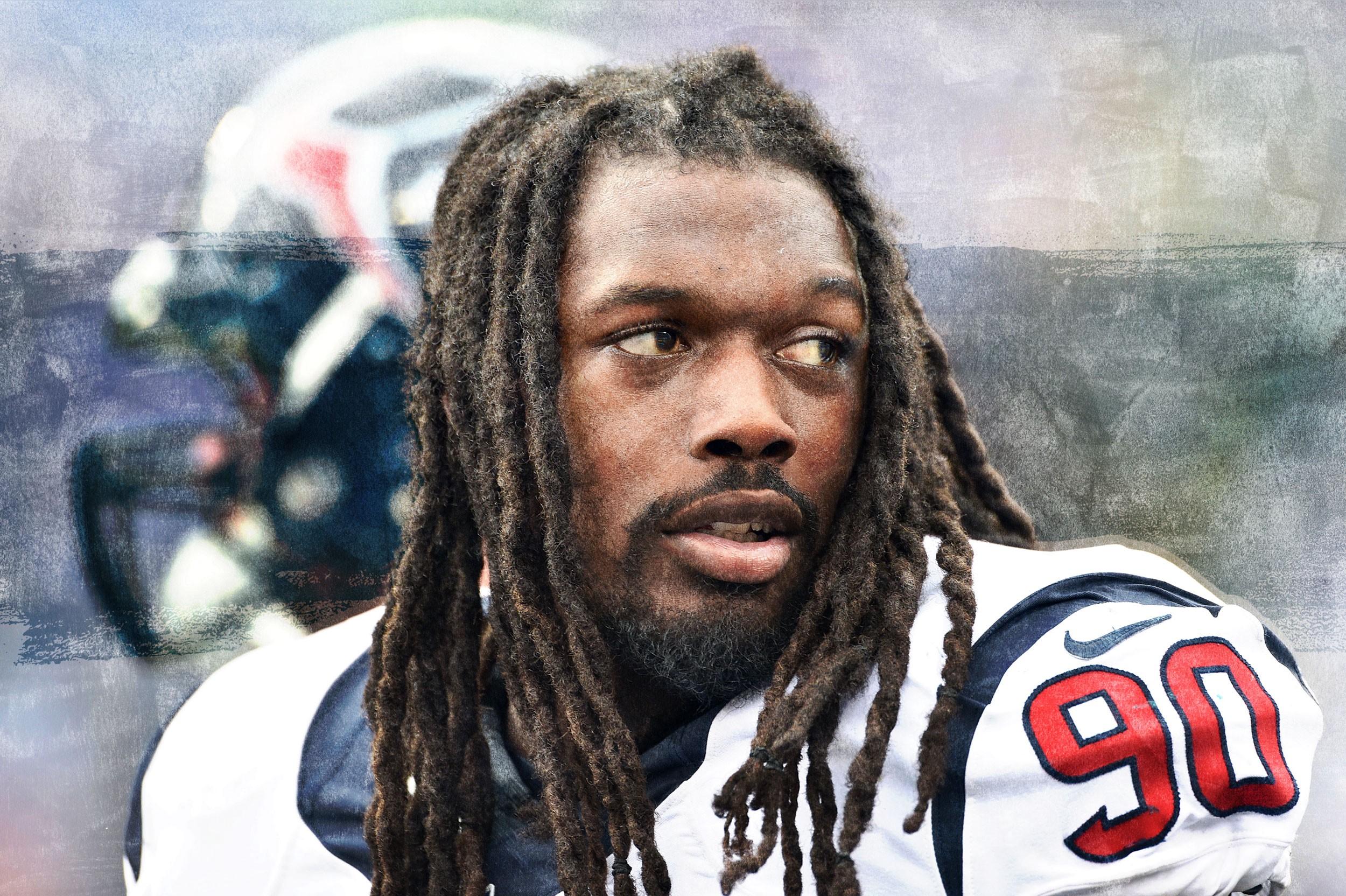It’s always hot in Houston. But in mid-August, the air feels like the inside of a pressure cooker and the sunlight feels like it’s coming through a magnifying glass. Sometimes the Houston Texans practice inside their inflatable practice bubble, but this August morning, the defending AFC South champions are drilling outside, in front of a grandstand full of fans. Five miles south of the largest church in the United States, the Texans draw their own faithful congregation.
Most of the time, the loudest sounds are the songs pumped in over the loudspeakers and new quarterback Brock Osweiler’s now-familiar pre-snap cadence, but more than an hour into Sunday-morning practice, training camp is interrupted by a swell of noise that slowly turns into a roar.
Dressed in a T-shirt, baseball cap, and shorts, J.J. Watt emerges through the cheering and onto the field. Unfazed by the weather, Watt smiles his broad television pitchman grin and waves to the crowd that, apart from a couple stray kids begging DeAndre Hopkins for a smile or an autograph, hadn’t lavished any particular player with any particular attention. By doing little more than taking a stroll across the practice field, Watt, the three-time Defensive Player of the Year, brings the crowd to full midseason frenzy.
Watt is still recovering from offseason back surgery. He’s hoping to start Week 1, but his training camp absence leaves a void in star power that outstrips even his unparalleled impact on the field. It’s a void that desperately wants to be filled.
“Everybody’s got to pick it up a little,” fellow pass rusher Jadeveon Clowney says. “He’s a big part of our defense and a big leader to the team. Other guys have to step up and pick up the slack.”
For the third year in a row, the Texans are missing a generational talent from their front seven. But for the first time, it’s Watt himself, not the man who was supposed to be even better. Clowney was the brightest star every step of the road to the NFL, but entering his third year in the league, not only is he being outshone for the first time in his life, he’s in danger of fading away.

As an amateur athlete, Clowney was always the biggest. At South Pointe High School in Rock Hill, South Carolina, he ran the anchor leg in the 4x100-meter relay in the state championships. Clowney, who was listed at 247 pounds during football season, lost to a runner half his size.
He played both ways for the South Pointe football team, which led to some hilarious highlights. Stronger than any offensive tackle who tried to block him and faster than any running back he had to chase down, Clowney outgrew normal man-among-boys rhetoric. The best clips, though, came from Clowney’s time as a running back. Watching opposing players trying to hunt him down was like watching dogs chase a passing bus — you knew they’d never catch him, but you feared for what would happen to them if they somehow did.
Clowney was the consensus no. 1 football recruit in the country in 2011, but after a prolonged recruitment that stretched almost two weeks past national signing day, he shrugged off interest from every powerhouse school in the country — most notably Alabama — to stay close to home and play for South Carolina. Clowney was the crown jewel of a string of loaded recruiting classes that laid the groundwork for an SEC East title in 2010, then 11 wins in each of Clowney’s three seasons with the Gamecocks. In Columbia, he got even bigger and stronger, and from day one he treated the SEC’s best offensive linemen like those poor high school kids. As a freshman: eight sacks and five forced fumbles. As a sophomore: 23.5 tackles for loss, including this one in the Outback Bowl:
At that moment, Clowney became the presumptive top pick in the 2014 draft, if he wasn’t already, and college football culture almost couldn’t process a player that dominant spending his junior year at a nontraditional power. After The Hit, one of the leading college football stories centered on whether or not Clowney should sit out his junior year to avoid injury. He didn’t sit out the season, but sometimes he didn’t show up. A bout of cramps in the season opener raised questions about his fitness, and after he pulled out of the Kentucky game minutes before kickoff, concerns about his effort and commitment became a major red flag leading up to the draft.
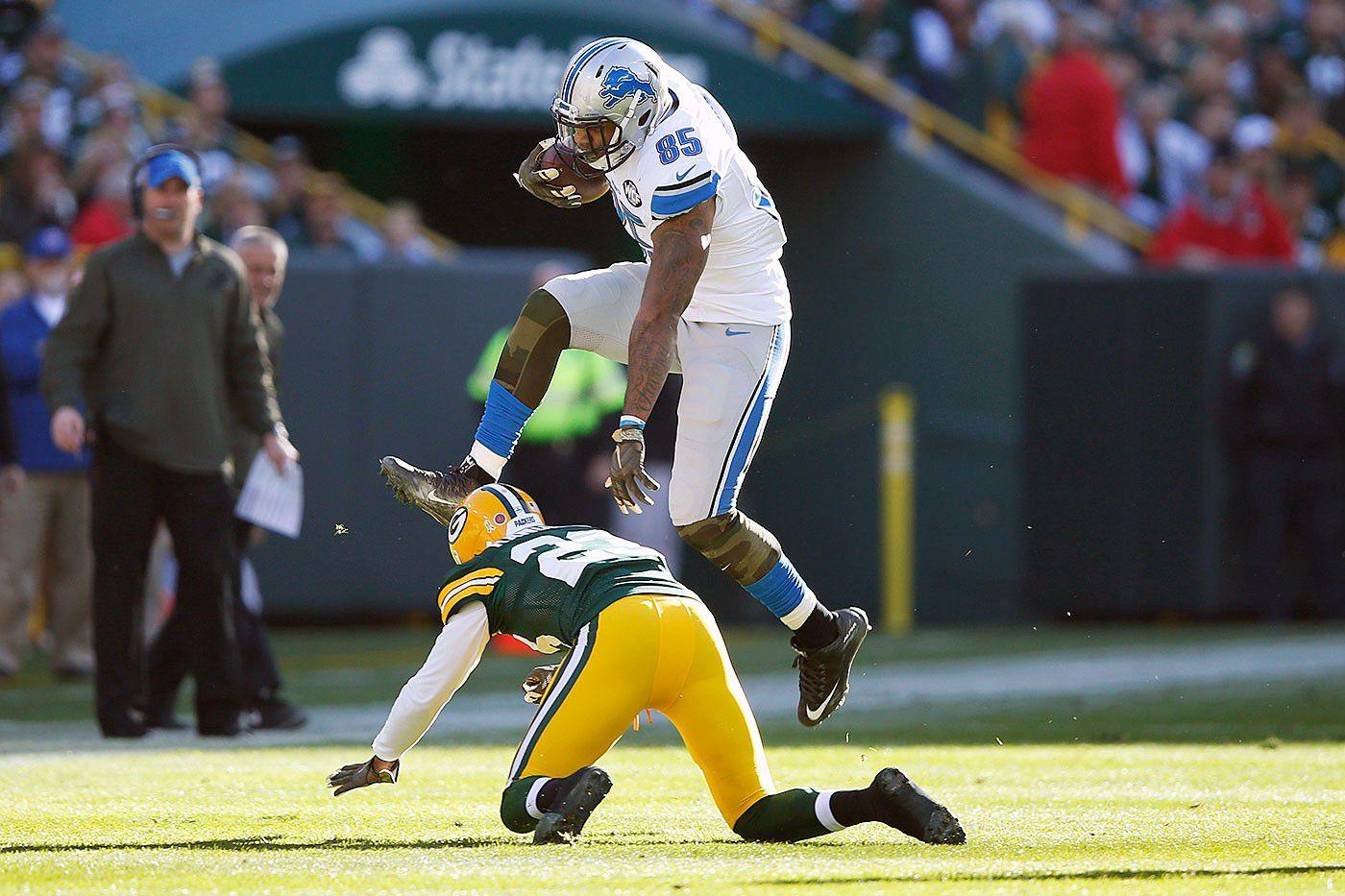
By his junior year, though, Clowney was getting the turn-of-the-century Shaq treatment: no play was too trivial for a double team, and no hold was egregious enough for a call. Clowney’s numbers plummeted (only three sacks), but the man next to him on the line, defensive tackle Kelcy Quarles, broke out for 9.5 sacks.
At the combine, Clowney weighed in at 266 pounds and ran the 40 in 4.53 seconds, a tenth of a second behind receivers Odell Beckham Jr. and Sammy Watkins. NFL Network’s Mike Mayock wrote: “The talent demands that he becomes the best defensive player in the league.” On draft day, Clowney went first overall, ahead of Watkins, Beckham, Khalil Mack, and Aaron Donald.
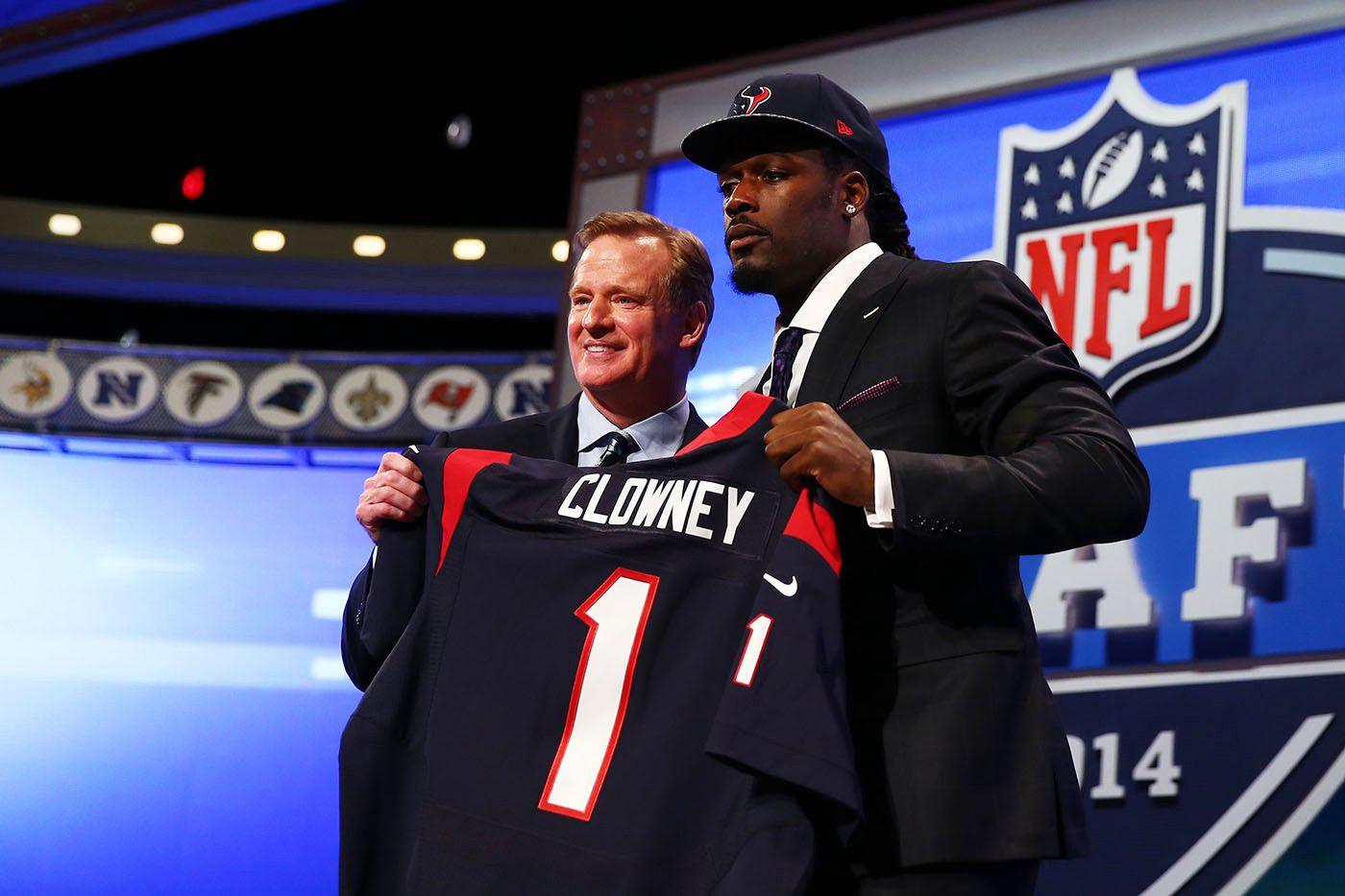
While those other draftees have become bona fide NFL stars, the best thing you can say about Clowney as a pro is that somehow his bigness still translates. Even around his Houston teammates, Clowney stands out. He’s taller, his arms are longer, his chest is broader, and at training camp, he shows off that buslike quality as he rounds an offensive tackle and chases down Lamar Miller from behind.
The worst thing you can say about Clowney as an NFL player is that The Hit, which is now almost four years old, is still the highlight of his career. He hasn’t topped it, nor has he really had the chance.
Clowney has played in 17 NFL games and started only 11 out of a possible 33, thanks to a string of injuries that date back to a torn meniscus he suffered in his NFL debut. Clowney missed six weeks, then came back and played three of the next four games before he reaggravated the injury and underwent season-ending microfracture surgery.
Gosder Cherilus, then playing offensive tackle for the Indianapolis Colts, had undergone and returned from microfracture surgery himself. At the time, Cherilus’s prognosis for the then-21-year-old Clowney was as succinct as it was damning: “He’s screwed.”

A torn meniscus is like a pothole, says Andreas Gomoll, an orthopedic surgeon at Brigham and Women’s Hospital in Boston and associate professor of orthopedic surgery at Harvard Medical School. Most cartilage-repair surgeries work the same way you’d fix a pothole: clean out the debris, smooth out the rough edges of the deformity, then fill it.
“Cartilage doesn’t heal. It’s one of the few tissues that doesn’t heal at all,” Gomoll said. “If you cut your skin, at least it heals with a scar. If you cut your liver, it heals with liver tissue. If you break a bone, it heals with bone. But with cartilage, for reasons we still don’t completely understand, it just doesn’t heal.”
Microfracture gets around that problem by poking tiny holes in the leg bone — the eponymous microfractures — and allowing blood and stem cells to seep out from the bone marrow into the knee, where they fill the tear and form a blood clot.
“Over time, that matures into scar tissue the same way your skin cut will heal first with a scab,” Gomoll said. “That’s a lower-quality cartilage. It’s not the same cartilage that we’re born with, but as long as it’s a small defect, it’s good enough. It’s not great, but it’s good enough.”
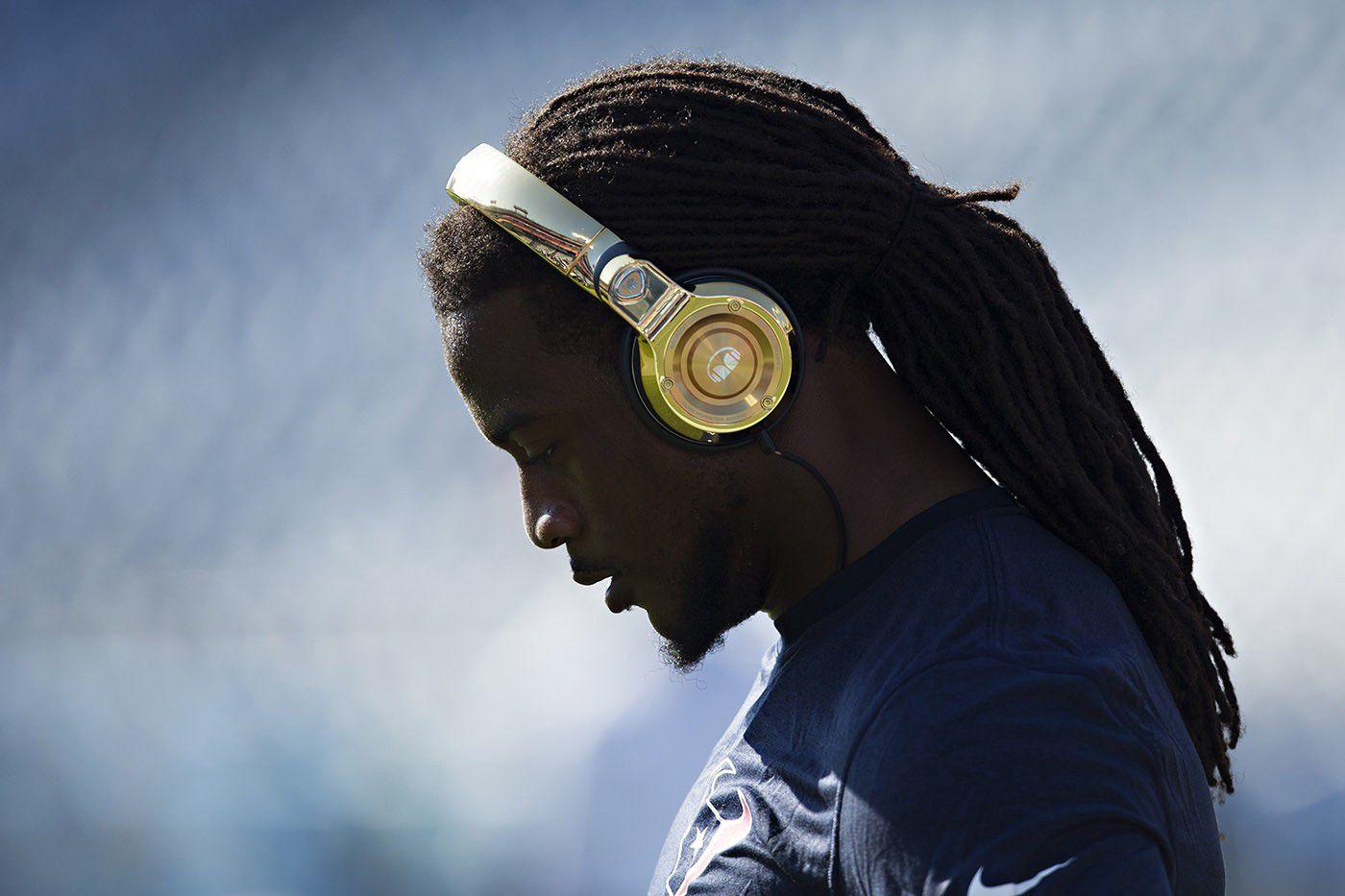
Since it’s a simple and quick arthroscopic procedure, microfracture has become the default remedy for a torn meniscus in sports medicine over the past 20 years or so. Gomoll says about 150,000 patients undergo microfracture surgery in the U.S. every year.
Even so, microfracture is far from routine.
“People think it’s a quick rehab because it’s arthroscopic, but in reality it takes athletes six months, sometimes nine months, to come back,” Gomoll said. “That’s because that tissue, when that scab forms, initially it’s really soft, and over time, with rehab, it firms up a little bit. But if you try and go back too early, you’ll just damage that repair tissue.”
For Clowney, microfracture meant more than six weeks on crutches to keep him from putting weight on the knee and destroying the clot. Then, he went through six more months of rehab — all of this with no guarantee that he was ever going to recover fully, or of how long his surgically repaired knee would hold up if he did.
“I talked to him almost every day, because I was here rehabbing something of my own,” said Houston cornerback Johnathan Joseph. “I’d just tell him that it’s a long, drawn-out process. It’s not going to happen overnight — it’s going to take some time, and it might take longer than expected.”
Go back and look at Clowney’s highlights again — his speed, his explosiveness, his ability to drive through blockers and ball carriers. After six to eight weeks’ worth of atrophy, it takes six to eight months to get back to that level of world-class athleticism.
“I did pretty much everything,” Clowney said. “A lot of straight-leg raises, TKEs, running in the pool, single-leg squat — everything you could think of, really, to keep that quad strong.”
But even once he got back into playing shape, he wasn’t all the way back.
“When you first come back, you still don’t feel like yourself,” Clowney said. “You’re still nervous about it when you first come back, because you know what was there and what happened to it.”
Clowney returned to play 13 games in 2015, starting nine, while picking up new injuries to his ankle and back. Spending so much time on the shelf hurt him not only physically, but developmentally. Clowney had been a 4–3 defensive end in college, and Houston’s base 3–4 defense forced him to switch to linebacker — but it’s more complicated than that.
“We kind of run both in our system, 4–3 and 3–4,” Clowney said. “We just switch it up; we’re very diverse and we can do many different things. We try to switch it up and show different looks to different teams.”
It’s not just changing positions and learning how to drop into coverage. Clowney says his assignments at South Carolina were extremely simple, since all you need to tell a guy who can run over an offensive tackle is, “Go get the guy with the ball.”
“I never really learned the game until I got here, about coverages, about offensive schemes, what to look for so you know what sort of play they’re going to run,” Clowney said.
Between all the missed time and missed reps, Clowney hasn’t produced much. After contributing only 4.5 sacks, six passes defended, and 32 tackles through two years, Clowney is in danger of becoming an afterthought for the first time in his career.
Going into the 2016 season, the third-year outside linebacker to watch is Oakland’s Khalil Mack, who posted a 15-sack breakout season in 2015. On his own front seven, Clowney has fallen behind not just Watt, but Houston’s other starting outside linebacker, Whitney Mercilus, who recorded 12 sacks last season.
The Texans have managed to build a very good defense without Clowney’s help. They were fourth in weighted DVOA last year, or to put it in simpler terms, they were good enough to win the division with Brian Hoyer and the E Street Band running the offense. Still, the prospect of a fully functioning Clowney playing alongside Watt remains, and it’s still Plan A for the Texans.
Clowney’s got an easygoing quality to him, but ask him if he’s got something to prove and his voice takes on an edge.
“Boy, when I get past these injuries, I’ll be where I need to be.”
A week later, the Texans scratched Clowney from the preseason opener with “knee soreness.”

In extremely simple terms, what does a football player do? Quarterbacks, running backs, receivers, and specialists, one way or another, get paid to move the football. Everyone else’s primary function is either to block or tackle.
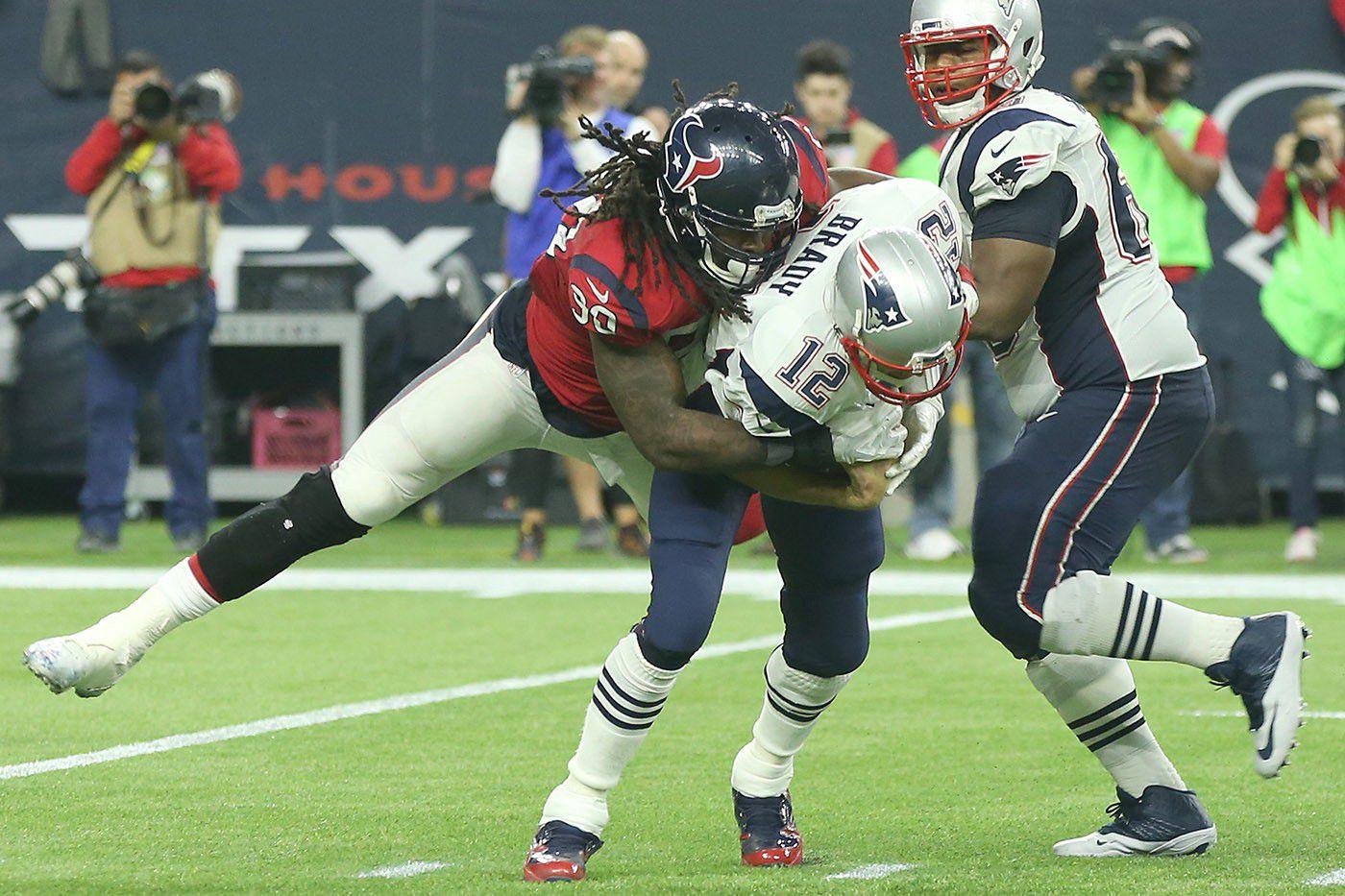
Clowney gets paid either to hit or to threaten to hit — to transfer kinetic energy. At 6-foot-5, 266 pounds, he transfers a lot of it. And even though it’s bigger, Clowney’s body still works the same way everyone else’s does. Is it even possible to be as big and fast and strong as he is without getting hurt?
Gomoll pointed to a 2008 study in the Journal of Knee Surgery that examined MRIs of 14 healthy NBA players’ knees. These NBA players had a mean age of 26, and none reported any pain or missed time due to injury, but 25 of those 28 knee joints showed cartilage abnormalities.
“That’s not true for the average population of that age,” Gomoll said. “If you grab 100 kids in their mid-20s off the street, the majority would not have cartilage defects in their knee. I think that’s a testament to how the body’s really not built to withstand that.”
If Clowney’s body is doomed to break down, the question becomes this: What can he control?
“None of it, really,” Clowney said. “But what you do when you take care of your body off the field is the biggest key.”
There’s very little Clowney hasn’t tried this past offseason; in addition to traditional workouts, he’s seen a chiropractor, undergone dry needle therapy, and had a well-publicized dalliance with yoga, which he says helped him loosen up his hips and lose about 20 pounds.
He’s also relied on Joseph, a 32-year-old cornerback who, like Clowney, hails from Rock Hill and played his college ball at South Carolina. Amid the concerns about Clowney’s inconsistent effort and Houston’s lack of a franchise quarterback, Joseph lobbied for the Texans to draft him back in 2014, and since then, the two have had a relationship both describe as big-brother-little-brother.
“We have conversations every day, about on-the-field, off-the-field [stuff],” Joseph said. “Obviously, he’s had his share of injuries early in his career. I’ve just talked to him about staying on those things and being ahead of the curve. Like doing some extra stuff in the training room, so those nagging injuries don’t come up and affect him where he can’t be out on the field.”
As Joseph pointed out, Clowney’s size and strength pose another unique problem.
“I always tell him that you have to go about your business and be a consummate professional at all times, because everywhere you go you’re going to be a recognizable figure,” Joseph said. “You’re not just like me, a 6-foot guy that’s kind of normal-sized. You’re 6-foot-7, 280 pounds and people are going to recognize you.”
Last August, Clowney’s father, David Morgan, was arrested and charged with attempted murder following an exchange of gunfire outside a Rock Hill strip club. Clowney has not commented publicly, and his involvement has been limited to speaking on his father’s behalf at a bond hearing in April. Morgan faces up to 75 years in prison if convicted.
Apart from a rash of speeding tickets his junior year of college, Clowney himself has stayed out of trouble. More trivially, he made headlines in July when Kure, a vape shop in which he invested, opened a branch in Columbia, South Carolina. Though a month after appearing at the club’s grand opening, Clowney was uninterested in talking about Kure, saying that he doesn’t know how business is going and that he never intended for his investment to become public information.
There’s only so much you can control.

Not every practice is held in the sun before the adoring public. Every so often the Texans retreat to the bubble to escape the heat. Away from the fans, Clowney bounces from one drill to the next like one of the guys, even though his size and long hair prevent him from ever truly blending in.
Later on, as the TV cameras swarm Osweiler, who holds forth on his developing chemistry with Hopkins with the charisma of a freshman legislator, Clowney is off on the sideline, reflecting on how his two-year tribulation has changed him.
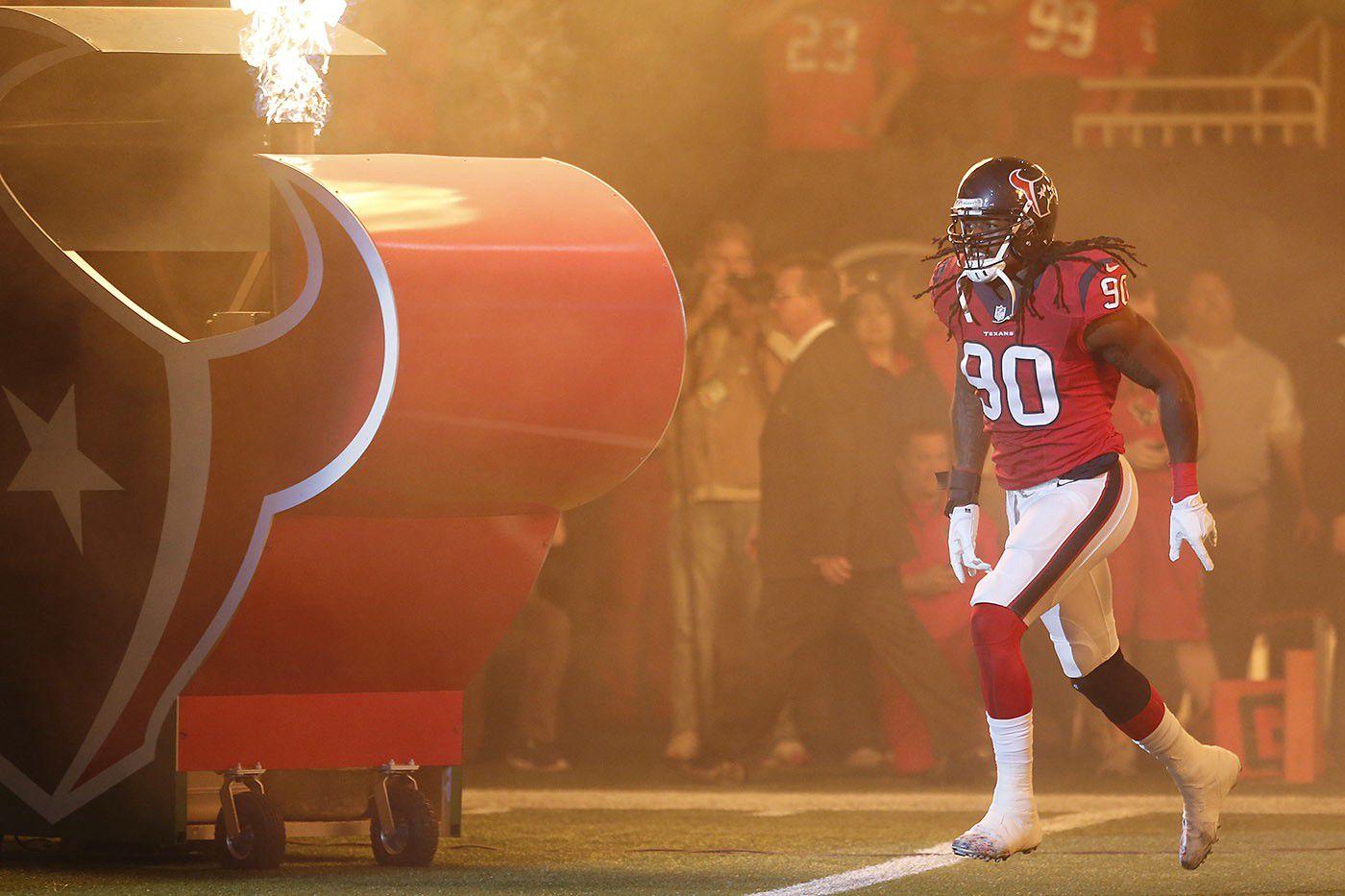
“The injuries taught me a lot about myself,” Clowney said. “That was really the first time in my life facing adversity. It brought me close to my family, some guys on the team, and I grew. I learned how to process it and take care of myself, taking every day seriously and not coming in saying, ‘I can do that later.’ ”
With only two years left on his rookie contract (and a team option for a third), Clowney can’t wait much longer to start producing before he goes from “no. 1 overall pick and terrifying man-beast” to “can’t stay on the field, doesn’t do much when he’s there,” if that hasn’t started to happen already. And everyone knows it.
“My expectations are always high for him, knowing the type of guy he is and the type of athlete he is,” Joseph said. “Being a close friend of his, and an honest friend and teammate of his, I always like to push him each and every day. I set the bar high for him because I know what type of talent he has. I just want the best for him at all times.”
After a few minutes, the post-practice milling-around and media scrum break up. Clowney joins his teammates on a walk back to the dressing room, and eventually, back out into the heat, and back out under the magnifying glass.
